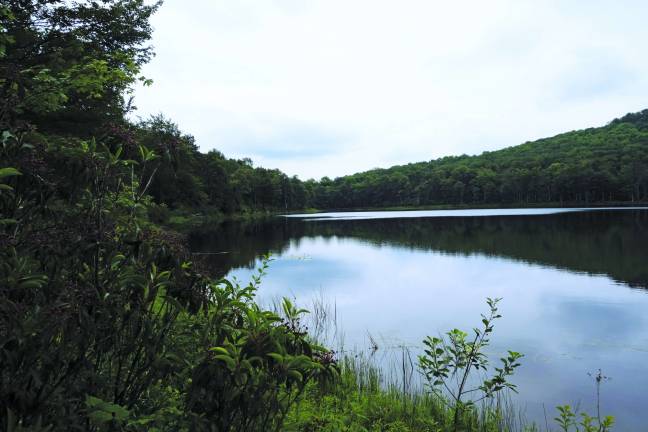When the days get shorter, the nights get weirder

The daylight hours begin to ebb soon after summer starts, but it’s months before we notice. We wake up late on hike days and still get out of the woods with the sun shining and the ice cream stands hopping. But by early October, night is making inroads. As we descend our mountains at the end of the day, following deep notches that shut out the sun for all but a few hours, night falls like a curtain. I keep my headlamp handy and forge ahead. If I turn it on too early, the light washes out the scene and stuns my eyes. Instead, I drink in the twilight. It deepens slowly enough to fool me into thinking I might be able to hike through the night this way.
Nightfall descends now at about 6:30, followed by about 45 minutes of fading light that confuses the outlines of boulders and trees until they disappear altogether. A layer of new-fallen leaves obscures the trail, even as most leaves remain in the canopy to block whatever moonlight there is. Our steps slow to a stop. We turn on our headlamps and continue down a moveable corridor of light. Tom occupies his own bright sphere as he pulls ahead of me. We are alone, together, two light bubbles bobbing in a sea of black. Sometimes a big, glowing moth will join me in my bubble like a winged spirit, as if in answer to a thought, or a yearning about someone lost to me.
It’s time to start getting to the trailhead earlier. We used not to do this. We used to just show up mid-morning and light our way out of the trail at the end of the day. Now we make better use of the daylight, which is enough for a day hike any time of year. We’re back to rising before dawn and eating oatmeal by candlelight. But part of me misses walking at night. Part of me misses the sharpened senses that informed my experience after the last tongues of light retreated from the woods. Here comes the night shift, I’d think, when hoots and howls replaced the sweet trills of songbirds. Many of the wild animals around here sound crazy when they call to one another in the night. Owls, loons, and coyotes can make you think the inmates have taken over the asylum. And then there’s the wind, which in fall starts to howl in a way it never does in summer. It begins as a low moan and grows louder, more insistent, and higher in pitch, and then down again, like a soul in hell.
Strangely enough, the scariest sounds are made by trees rubbing together as they sway in the wind. Think of a bow drawn repeatedly across strings. Think of a musical instrument several stories high, deeply resonant, and played with a ship’s mast. With enough momentum, the whole tree will start to wail, beating a rhythm that seems to have an intelligence behind it. I catch my breath. I look around. I lose my cool. Tom, Tom, hold up brother, wait up. Wait up! I stumble as I race toward Tom’s light bubble. No wild animal sounds like that, and no human, either. But then I remember. It happens rarely enough, after all – that interplay of wind and branch, when the first blast of winter catches the last leaves of summer, that bends sturdy trunks like willows and fills the wood with screams.
The Trout Pond loop, in the quiet western Catskills, is an easy hike of less than five miles and quite manageable before nightfall, even if you make it out of the house late. We stop at Mud Pond first and save Trout Pond for our picnic, which gets most of the hike done with less than two miles back on a wide, gently descending road. But I wouldn’t mind getting caught at Trout Pond some night when the moon is full overhead, mirrored on the water’s surface and filling the little basin with cold blue light; and when nocturnal spirits emerge from the darkness beyond the trees to cast long shadows of their own, as they pause awhile at the rocky shore.
Sneak peak:
Trailhead: Russell Brook Road, in Delaware Wild Forest (near Downsville)
Trail: Blue-blazed Mud Pond Trail (2.9 miles) to blue-blazed Trout Pond Trail (1.4 miles)
Note: There’s plenty of primitive camping available around this area.